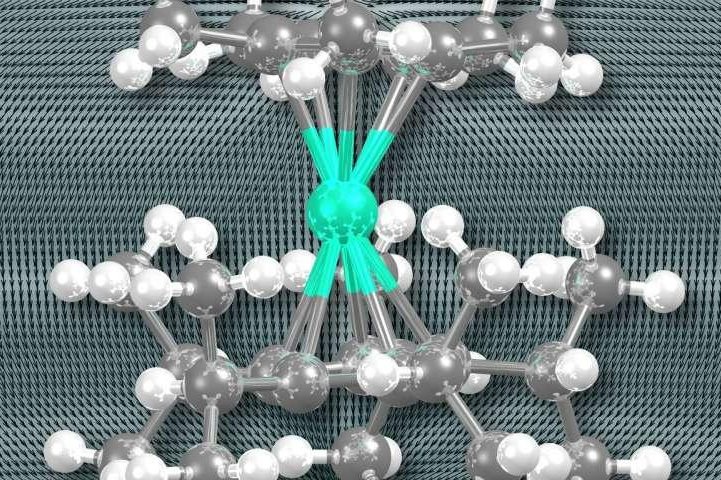Scientists synthesized a new kind of single-molecule magnet that stores magnetic information at 80 Kelvin, a new record. Photo by Richard Layfield/University of Sussex
Oct. 18 (UPI) -- Scientists have designed and synthesized a high-temperature single-molecule magnet, the first of its kind. The breakthrough could inspire more efficient digital storage technologies for use in quantum computers.
Single-molecule magnets, or SMMs, are metalorganic compounds that store magnetic information for long periods of time. The behavior of of SMMs reveals the influence of a magnetic field long after the magnetic field has been turned off or removed.
But each SMM only works below a specific "blocking temperature," limiting their potential. The new SMM, designed by a team of scientists from China, England and Finland, features a blocking temperature of 80 Kelvin.
Until now, all single-molecule magnets required liquid-nitrogen cooling to their demonstrate magnetic memory effects. The new SSM, a dysprosium metallocene cation, works at temperatures above the boiling point of liquid nitrogen.
Of course, the boiling point of liquid nitrogen is still much colder than room temperature. But as stated in a new paper published in the journal Science, the breakthrough has moved scientists closer to the "development of nanomagnet devices that function at practical temperatures."
"Our new result is a milestone that overcomes a major obstacle to developing new molecular information storage materials and we are excited about the prospects for advancing the field even further," Richard Layfield, professor of chemistry at the University of Sussex, said in a news release.
Scientists think an SMM that operates at practical temperatures could be used to build microprocessors for quantum computers.















